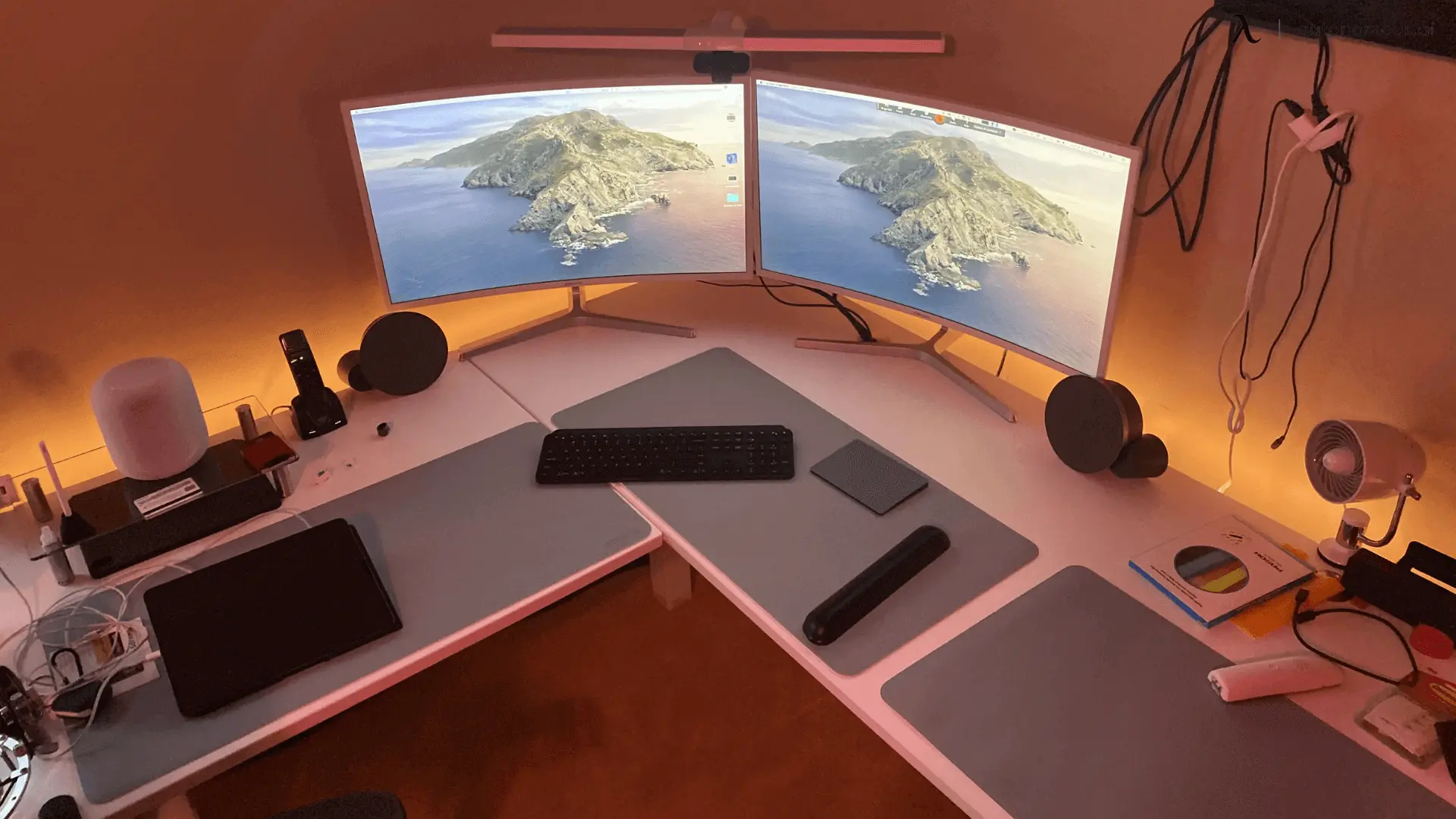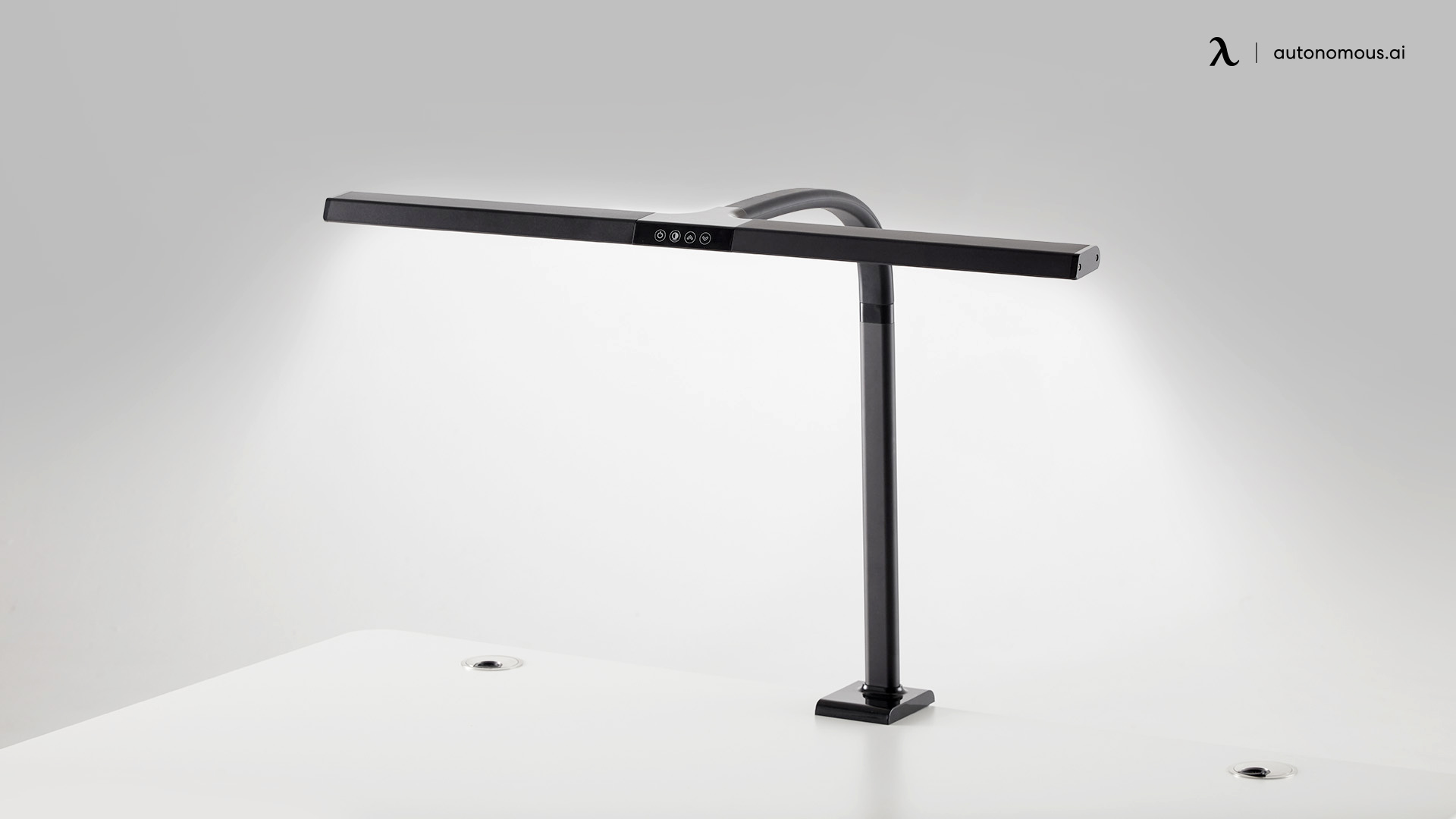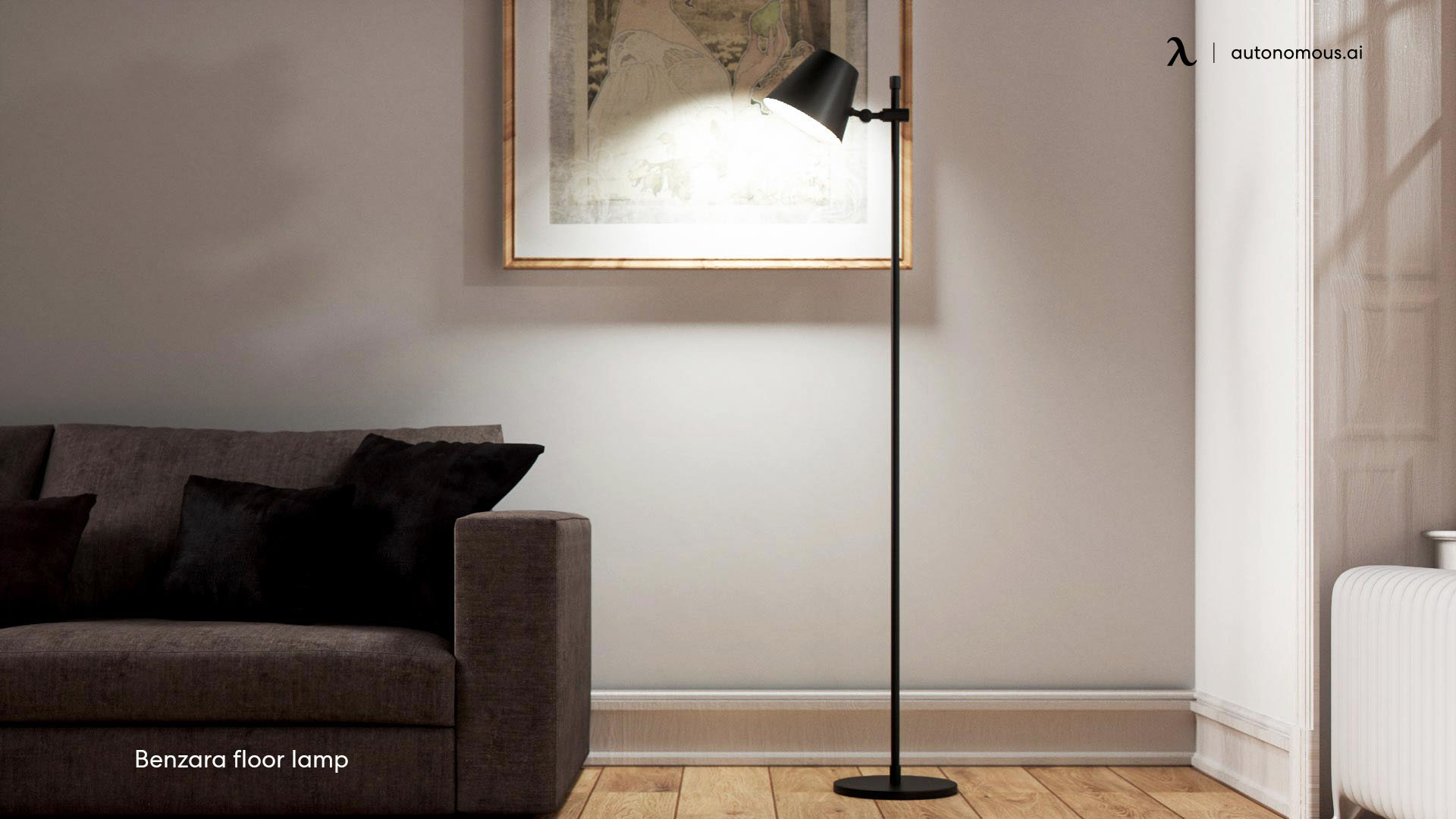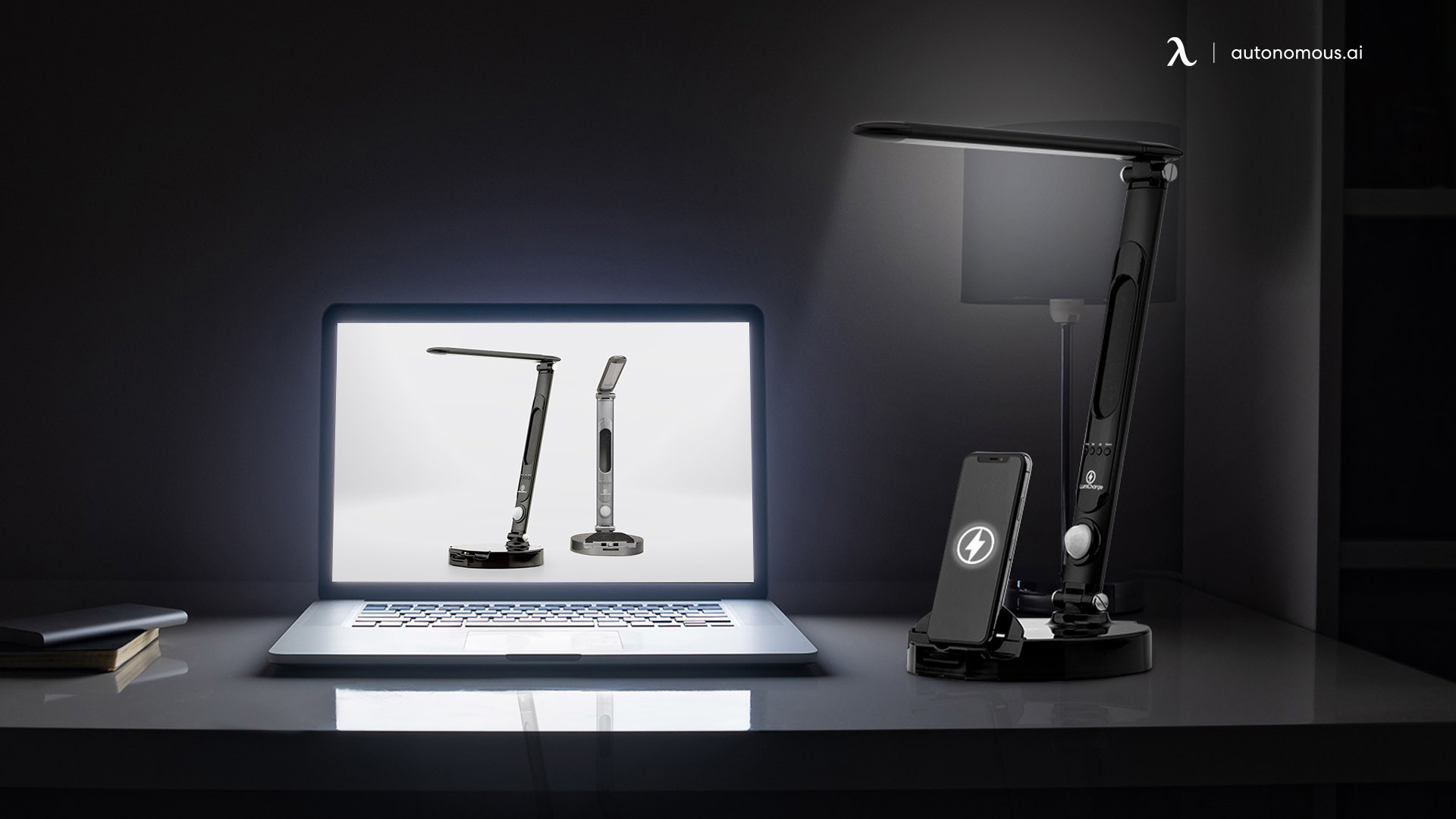
White Light vs. Yellow Light Which One Is Better for Eyes
Table of Contents
Lighting plays a crucial role in how we feel, focus, and perform in our workspaces, whether at home or in an office. Choosing between white light vs yellow light can influence energy levels, eye comfort, and productivity throughout the day. White light, often closer to natural daylight, is known to energize and enhance focus, while yellow light provides warmth and relaxation, making long hours more comfortable.
In home offices, gaming setups, or corporate environments, understanding the differences between these light types ensures you select the right illumination for your tasks. From white light vs yellow light for office to white light vs yellow light for home, this guide will explore the effects of both types of lighting and how to optimize your workspace to balance alertness, comfort, and mood.
White Light vs Yellow Light – Key Differences
Choosing the right light color for your workspace depends on how you use your desk, your daily routine, and the environment you want to create. Understanding the characteristics of white light vs yellow light helps you make informed decisions.
White Light
- Typically ranges from 5000K to 6500K, mimicking natural daylight.
- Increases alertness, making it ideal for high-focus tasks like spreadsheet analysis, coding, or detailed design work.
- Enhances concentration but may cause eye strain or glare if used for long periods without proper diffusers or desk positioning.
- Often preferred in corporate offices, shared workspaces, or study areas to maintain energy and focus.
Yellow Light
- Ranges from 2700K to 3500K, giving a warmer, softer tone.
- Reduces eye strain and creates a more relaxed atmosphere, which is ideal for reading, brainstorming, or evening work.
- Encourages calmness and comfort, helping prevent headaches or visual fatigue during long sessions.
- Commonly used in home offices, living rooms, or creative spaces to foster a cozy and inviting environment.
Feature | White Light | Yellow Light |
Color Temperature | 5000–6500K | 2700–3500K |
Effect on Energy | Boosts alertness | Promotes relaxation |
Best For | Focused tasks, office work | Reading, creative tasks, evening use |
Eye Comfort | Can strain eyes | Gentle on eyes |
Mood | Energizing | Cozy, calm |

Which Light is Better for Eyes and Health
Your choice of lighting has a direct impact on eye comfort, fatigue, and overall health during long hours at your office desk. Understanding the benefits of white light vs yellow light for eyes can help you reduce strain and improve productivity.
White Light and Eye Health
- White light is bright and energizing, helping maintain alertness during the day.
- Ideal for tasks requiring precision, such as coding, spreadsheet work, or graphic design.
- Prolonged exposure to high-intensity white light may cause eye fatigue or headaches if glare isn’t managed or if the light is too close to your eyes.
- Using diffusers or adjustable desk lamps can reduce strain while still benefiting from the focus-enhancing properties of white light.
Yellow Light and Eye Comfort
- Yellow light is softer, warmer, and reduces visual fatigue.
- Perfect for reading, brainstorming, or evening work when you want to maintain comfort without compromising alertness completely.
- Gentle on the eyes and helps prevent dryness, irritation, or tension headaches, especially in low-light environments.
- Pairing yellow light with dimmable lamps or layered lighting setups can maximize comfort while keeping a productive workflow.
Key Takeaway: While choosing between white light or yellow light for eyes depends on the task, using a combination of both—through adjustable or smart lighting—ensures optimal focus, reduces fatigue, and supports eye health throughout the day.
For guidance on selecting the right tones, you can compare soft white vs daylight, explore soft white vs warm white, and learn which lights are good for eyes to make the best choice for your workspace.

Task-Based Recommendations
Choosing between white light vs yellow light depends on the type of work you do and the environment you are in. Matching the right light to your tasks improves focus, reduces eye strain, and creates the ideal ambiance for productivity or relaxation.
Task | Recommended Light | Reason |
Office Desk Work | White light | Enhances alertness, ideal for spreadsheets, reports, or detailed analysis |
Gaming Setup | White or adjustable light | Boosts focus and visual clarity, supporting immersive gameplay |
Home Office / Reading | Yellow light | Reduces eye strain and promotes a comfortable, relaxed atmosphere |
Bedroom / Evening Work | Yellow light | Maintains circadian rhythm and avoids overstimulation |
L-shaped Desk or Multi-Monitor Setup | Adjustable or mixed lighting | Combines focus for main tasks with softer light for peripheral areas |
Practical Tips:
- Use dimmable lamps or smart bulbs: Switch between white and yellow light depending on the task or time of day.
- Layer your lighting: Combine overhead lighting with desk lamps to balance brightness and reduce shadows.
- Adjust positioning: Place light sources to avoid glare on screens or reflective surfaces.

Light Placement and Ergonomics
Proper lighting isn’t just about choosing white or yellow bulbs—it’s also about where and how you place your lights to support productivity, comfort, and eye health.
Tip | Recommendation | Why it Matters |
Desk Lamp Position | Place lamps slightly to the side and above your workspace | Prevents glare on screens and reduces shadows |
Adjustable or Dimmable Lights | Use lamps with adjustable color temperature | Switch between white and yellow light depending on task or time of day |
Overhead Lighting | Ensure evenly distributed ceiling lighting | Reduces harsh contrasts and eye strain across the entire workspace |
Layered Lighting | Combine overhead, task, and ambient lights | Balances brightness for focus, relaxation, and comfort |
Screen Placement | Position monitors perpendicular to windows or lamps | Minimizes reflections and reduces eye fatigue |
Light Intensity | Avoid extremely bright or harsh lights | Protects eyes and supports longer work or study sessions |
Ergonomics Tip: Proper lighting works best when paired with an adjustable desk and ergonomic chair. Alternating between sitting and standing helps reduce strain on your back and shoulders while maintaining productivity.
To reduce eye fatigue during long computer sessions, adding a monitor backlight can balance screen brightness and improve visual comfort. If you’re working in a shared office or cubicle, proper cubicle lighting ensures your workspace remains well-lit without disturbing coworkers.
Understanding lighting ergonomics for computer users can guide your setup, while learning the differences between lamps vs overhead lighting helps you choose a combination that reduces glare and shadows.
For gamers or content creators, exploring gaming light setup ideas can enhance ambiance and immersion without compromising comfort.

Pros and Cons of Each Light Type
Understanding the advantages and disadvantages of white light vs yellow light helps you choose the right lighting for your workspace, whether at home or in an office.
Light Type | Pros | Cons |
White Light | Boosts alertness and concentration, ideal for office tasks and gaming; mimics natural daylight; enhances focus and productivity | Can cause eye strain or glare if too bright; may feel harsh in relaxed environments; less cozy for evening work |
Yellow Light | Softens the workspace, reduces eye fatigue; creates a warm and relaxing atmosphere; ideal for reading, brainstorming, and evening use | May feel too dim for detailed tasks; less energizing for high-focus work; not ideal for prolonged productivity-intensive sessions |
Adjustable / Mixed Lighting | Combines the benefits of both white and yellow light; allows switching based on task, time, or mood | Requires compatible fixtures or smart bulbs; slightly higher setup cost |
Key Takeaway: No single light type is perfect for all situations. Using a combination of white and yellow lighting—or adjustable bulbs—ensures optimal comfort, productivity, and eye health throughout your workday.

FAQs
Which is better for the eyes, white or yellow light?
White light is bright and energizing, ideal for tasks requiring focus, but prolonged exposure can cause eye strain. Yellow light is softer, reducing fatigue and making it easier on the eyes for extended periods, especially in the evening.
Is white light better than yellow for studying?
Yes, bright white light enhances alertness and concentration, helping you stay focused on reading, writing, or screen-based tasks. Yellow light, however, is more relaxing and better for review or brainstorming sessions.
What type of light should I use in a home office?
Use white light for high-focus activities like computer work, spreadsheets, and detailed tasks. Yellow light is ideal for relaxed tasks such as reading or casual brainstorming, creating a warm and comfortable environment.
Is yellow light better for evening use?
Yellow light is preferable in the evening because it reduces eye strain and minimizes disruption to your natural sleep cycle, unlike intense white light that can be stimulating before bed.
Can I mix white and yellow lighting in a single space?
Yes, combining both types using adjustable lamps or layered lighting allows you to switch between focus-oriented white light and cozy yellow light depending on the task and time of day.
What’s the difference between warm white light and yellow light?
Warm white light falls in the same general range as yellow light but tends to be slightly brighter and closer to neutral white, offering a balance between comfort and productivity.
Should I use white or yellow light for a bedroom?
Yellow light is generally recommended for bedrooms because it promotes relaxation and prepares your body for sleep. White light can feel too harsh and may interfere with winding down.
Does light color affect productivity?
Yes, white light can increase alertness and concentration, making it great for office or study spaces. Yellow light supports relaxation and helps reduce eye fatigue, so use it for low-intensity work or creative tasks.

Conclusion
Choosing between white light and yellow light for your office or home office isn’t just about preference—it’s about creating a workspace that supports your focus, comfort, and overall well-being. White light enhances alertness, productivity, and visual clarity, making it ideal for high-focus tasks, gaming setups, or detailed work. Yellow light, on the other hand, offers a warmer, softer glow that reduces eye strain, promotes relaxation, and helps maintain a healthy sleep cycle.
The best approach often involves layered or adjustable lighting, allowing you to switch between white and yellow light depending on the task, time of day, or mood. By understanding the differences and applying them thoughtfully in your workspace, you can optimize your environment for productivity, creativity, and comfort.
Experiment with placement, brightness, and bulb types to find the perfect balance for your eyes and workflow. Whether you’re working long hours at a desk, gaming, studying, or reading, selecting the right lighting ensures that your workspace is not just functional, but also comfortable and supportive for your daily routine.
Spread the word
.svg)







